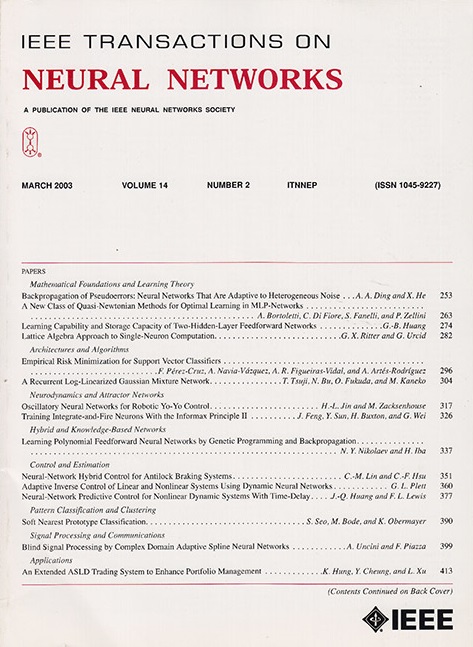基于颗粒球计算的复杂数据高效自适应聚类
IF 8.9
1区 计算机科学
Q1 COMPUTER SCIENCE, ARTIFICIAL INTELLIGENCE
IEEE transactions on neural networks and learning systems
Pub Date : 2025-01-01
DOI:10.1109/TNNLS.2024.3497174
引用次数: 0
摘要
传统的聚类算法通常关注最细粒度的信息,通过计算每对数据点之间的距离或基于点实现其他计算来实现聚类。这种方式与人脑“全局优先”的认知机制并不一致,导致这些方法在效率、泛化能力和鲁棒性方面表现不佳。为了解决这个问题,我们提出了一种新的聚类算法,即通过颗粒球计算的颗粒球聚类。首先,基于颗粒球的聚类算法(GBCT)生成较少数量的颗粒球来表示原始数据,并根据颗粒球之间的关系而不是传统的点关系来组成聚类。同时,其粗粒度特征不易受噪声影响,算法高效、鲁棒;此外,由于颗粒球可以拟合各种复杂的数据,因此GBCT在非球状数据集上的聚类性能比其他传统聚类方法要好得多。全新的GBCT粗粒度表示方法和聚类形成模式也可用于改进其他传统方法。所有代码都可以在https://github.com/wylbdthxbw/GBC上获得。本文章由计算机程序翻译,如有差异,请以英文原文为准。
GBCT: Efficient and Adaptive Clustering via Granular-Ball Computing for Complex Data
Traditional clustering algorithms often focus on the most fine-grained information and achieve clustering by calculating the distance between each pair of data points or implementing other calculations based on points. This way is not inconsistent with the cognitive mechanism of “global precedence” in the human brain, resulting in those methods’ bad performance in efficiency, generalization ability, and robustness. To address this problem, we propose a new clustering algorithm called granular-ball clustering via granular-ball computing. First, clustering algorithm based on granular-ball (GBCT) generates a smaller number of granular-balls to represent the original data and forms clusters according to the relationship between granular-balls, instead of the traditional point relationship. At the same time, its coarse-grained characteristics are not susceptible to noise, and the algorithm is efficient and robust; besides, as granular-balls can fit various complex data, GBCT performs much better in nonspherical datasets than other traditional clustering methods. The completely new coarse granularity representation method of GBCT and cluster formation mode can also be used to improve other traditional methods. All codes can be available at https://github.com/wylbdthxbw/GBC.
求助全文
通过发布文献求助,成功后即可免费获取论文全文。
去求助
来源期刊

IEEE transactions on neural networks and learning systems
COMPUTER SCIENCE, ARTIFICIAL INTELLIGENCE-COMPUTER SCIENCE, HARDWARE & ARCHITECTURE
CiteScore
23.80
自引率
9.60%
发文量
2102
审稿时长
3-8 weeks
期刊介绍:
The focus of IEEE Transactions on Neural Networks and Learning Systems is to present scholarly articles discussing the theory, design, and applications of neural networks as well as other learning systems. The journal primarily highlights technical and scientific research in this domain.
 求助内容:
求助内容: 应助结果提醒方式:
应助结果提醒方式:


